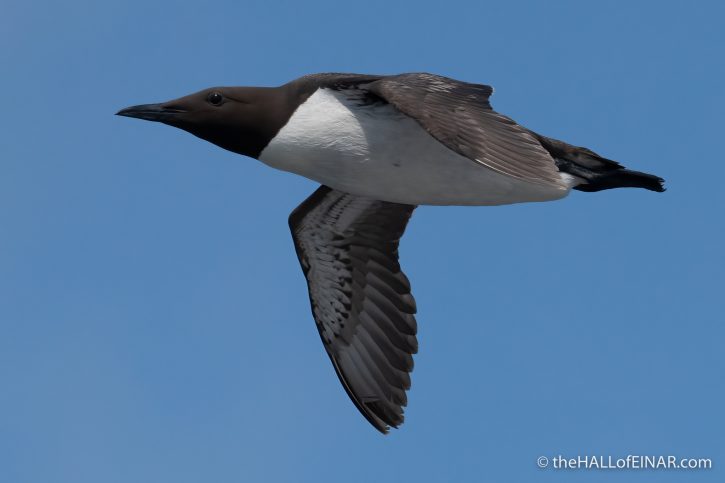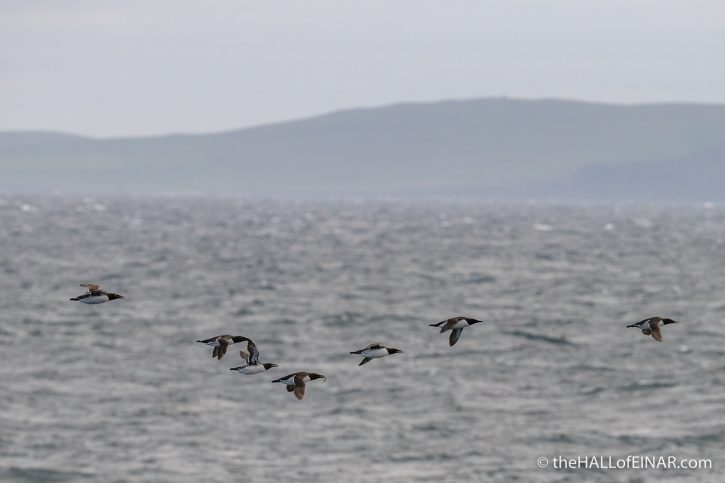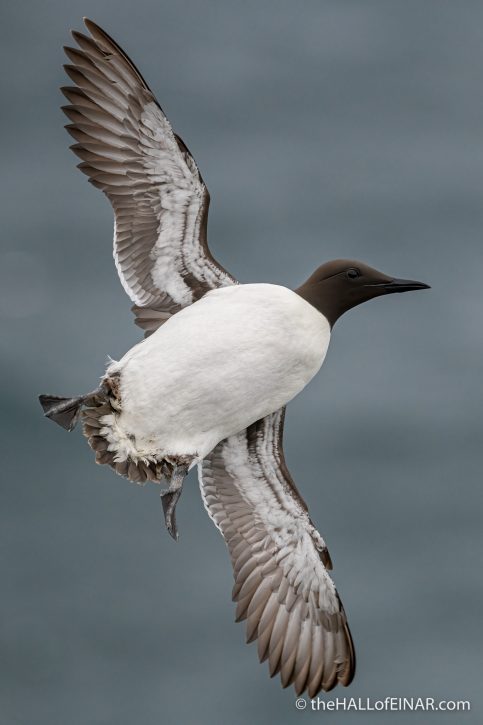A minute and counting
Common Guillemots are free-diving pursuit divers. Their diet is fish, and the fish which are alive in today’s ocean are the descendants of the ones which escaped the ancestors of these Guillemots. Fish want to live: Guillemots want to eat. It’s a classic evolutionary arms-race. Fish have become better at avoiding capture and birds have become better at diving and capturing.
Watching Guillemots upending themselves and disappearing into the depths is a joy and a wonder. How can they stay underwater for so long? A minute can go by before I see one surface again. The scientific record shows they can dive to 160m depth and be underwater for two minutes. It’s astounding, it’s happening just off our coast, and it’s free to watch. No TV licence fee is required.
Here’s a Common Guillemot in flight:

Common Guillemots have a couple of forms – they show polymorphism. There’s the usual brown-headed version and there’s the limited edition bridled version, with fine white eye-liner:

Cool huh? In Orkney they are known as Aaks, which is also the wartime codename of Westray folks.
Guillemots bring the fish they have expended so much energy in catching back to their nests on the cliffs. They wait until they can join a Guillemot caravan and travel in a long strung-out line. They need safety in numbers from attack by kleptoparasitic Arctic Skuas, which are intent on stealing their fish:

You might just be able to see a fish hanging from the beak of the one in the middle. That must ruin your aerodynamics when you’re travelling at 50mph.
Up at Noup Head it’s blustery and I’m waiting on the cliff-tops for birds which have to adjust to the sudden changes in wind. One flies in, meets the wind over the cliffs, and gives the most fabulous view of its feathers.

They can swim, they can fly, they can perch on tiny cliff ledges for a full month with a single egg. They are fabulous. It’s a thrill to spend time with them.
Thanks for joining me while I express my love for them.